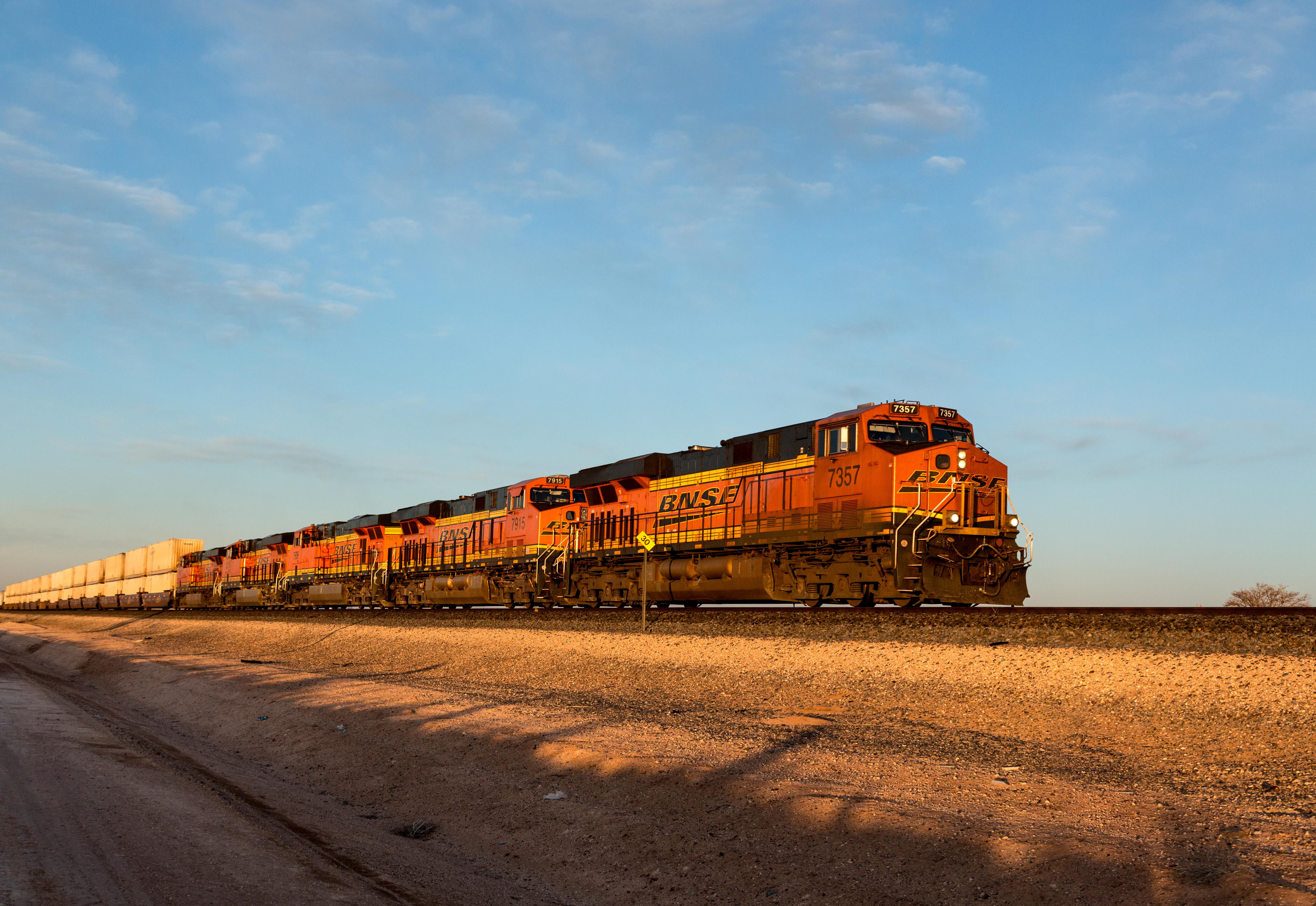A new chapter for West Coast freight: How BNSF is ready to support customers’ supply chains

At BNSF, moving freight is what we do. We are committed to making continuous improvements through sustainable innovation and leadership for more efficient service for our customers.
“The past few years have brought a tremendous amount of change for the entire transportation industry to react and respond to,” Tom Williams, BNSF group vice president, Consumer Products, said. “But, in spite of this, we’ve all remained resilient and have pushed forward to continue to deliver the goods the world needs.”
“Here at BNSF, we are proud to be the industry service leader, and are dedicated to running this railroad at its top performance to move customer shipments safely, and with the consistent and reliable service we know you need and depend on us to deliver,” Williams said. “We’re excited for the future ahead and look forward to collaborating with you.”
On June 14, the International Longshore and Warehouse Union (ILWU) and the Pacific Maritime Association (PMA) announced that they reached tentative contract agreements. This agreement is the beginning of an exciting and more efficient future for our West Coast ports – and our customers’ unique supply chains, too.
BNSF is ready to be part of that future with our customers, and we are ready to support their West Coast freight needs both in the immediate and long-term.
“Over the course of the past few years and through the pandemic, we’ve been strategically expanding capacity at our West Coast intermodal facilities, increasing capacity across our network, and implementing new technology to be ready for the growth our customers need,” Jon Gabriel, BNSF vice president, Service Design, said. “BNSF is bigger, better and more resilient than ever. We are ready to move your freight!”

Expanding capacity at West Coast intermodal facilities
Expanding our capacity along the West Coast, specifically at our intermodal facilities, allows us to provide service that continually meets customer expectations. For example, by increasing parking capacity by 500 spaces at our Hobart intermodal facility in Los Angeles, as well as installing new crane-stacking technology for additional lift capacity, BNSF is ready to handle increasing volumes.
BNSF is amidst a multi-year project to increase efficiency at our San Bernardino, California, intermodal facility, including adding 500 new parking spaces and extending the lead track (track that connects a facility to a main line) to the east by 10,000 feet. This allows us to increase switching capabilities and is complemented by 5,000 feet of new production track capacity. By extending the Ono Lead, we are proactively working to alleviate potential congestion both within and outside this facility.
Finally, we expanded our transloading capacity in the greater Seattle region through our partnership with the Northwest Seaport Alliance (NWSA) and J.B. Hunt by creating the Tacoma South facility at the Port of Tacoma. This enables additional capacity at our South Seattle Intermodal facility.

More capacity across the network
By creating space for growth across our network, we are ready to meet our customers where they are and support their needs while ensuring consistency of service.
Since 2019, BNSF has spent more than $2 billion in capital expansion, increasing the overall capacity of our tracks, railcars and facilities. These investments have net increased our mainline track capacity by 58 miles, totaling ~30,000 feet for new production tracks and ~6,000 new parking spaces at our intermodal facilities. This includes expansion at locations such as:
- Alliance, Texas: Added three miles of production tracks, 2,000+ parking spaces and a new multi-lane ingate.
- Logistics Park Chicago (LPC): Expanded our use of remotely operated cranes to maximize capacity and improve throughput, gaining 18 hours of productivity each day.
- Cicero, Illinois: Increased parking capacity by about 20 percent, with continued expansion work continuing this year and into 2024 for additional production track and parking capacity.
In addition to the expansions in Alliance, LPC and Cicero, we have secured nearly 2,000 more parking stalls in secondary locations around our intermodal facilities to utilize as needed.

Continuing our project to add a total of ~45 miles of triple track in California between Barstow and Needles, about 30 miles of triple track are planned to come online this year – as well as completing a 50-mile double-track segment in Kansas. This will close one of the last major single-track sections on our Southern Transcon, which plays an essential role in connecting the West Coast to Chicago.
We have also taken the first steps to construct a second main-track bridge over the Missouri River at Sibley, Missouri. This will be a major undertaking over the course of the next few years and will significantly complement the double-track work we have completed west of Kansas City, offering customers faster transit times and better consistency, as well as improving our ability to handle seasonal volume swings across the Southern Transcon.
New technologies
Technology is a powerful tool in improving service consistency, capacity and, most importantly, our customers’ experience shipping with us. And at BNSF, we’re diving in on some really exciting, industry-leading efforts that reflect our commitment to continuous improvement.
For example, we are utilizing unit loading and de-ramping optimization technology to improve transit consistency and facility fluidity by best utilizing available parking capacity. Through machine vision optical character recognition (OCR) technology to support inventory accuracy, we also have the ability to know every available shipment parking location in real-time. This fosters a seamless driver pick-up experience and train-loading experience, and is an incredibly important piece of technology that impacts all other optimization efforts focused on delivering improved consistency and more capacity to our customers’ supply chains.
Likewise, we are also making new enhancements to our driving interface app, RailPASS, and are implementing a new pickup appointment system for stacked units at LPC later this year, which will minimize drivers’ time in the LPC facility and improve service efficiency.

Additional operational actions
Our people are what allow us to operate and meet customer expectations. To support continued growth and shipping demand, we achieved our hiring plan in 2022 of 3,000 additional employees – including 1,800 additional train crew employees. Our hiring plan for 2023 is also robust, with specific focus on hiring in historically difficult markets.
Since 2019, we have purchased 20 additional railcar sets (4,800 double-stack platforms), alongside our participation in the North American fleet pools, the system that allows rail carriers to share equipment. Alongside railcar pool fleets, our investment in our own intermodal fleet, which is the largest in the industry, is critical to ensuring capacity when needed most. Likewise, we have positioned 100 locomotives as a “ready fleet” across the West Coast and other strategic network locations to respond to any service disruptions and continue to provide the freight movement customers expect.

With these advancements to increase our network fluidity, velocity and capacity, BNSF is ready to meet our customers’ service expectations and navigate through the West Coast’s increasing demand with sustainability and efficiency at the forefront of our plan.
To our customers, thank you, as always, for your continued business and the opportunity to serve as your transportation service provider. For more information on shipping with BNSF, please visit our website.


